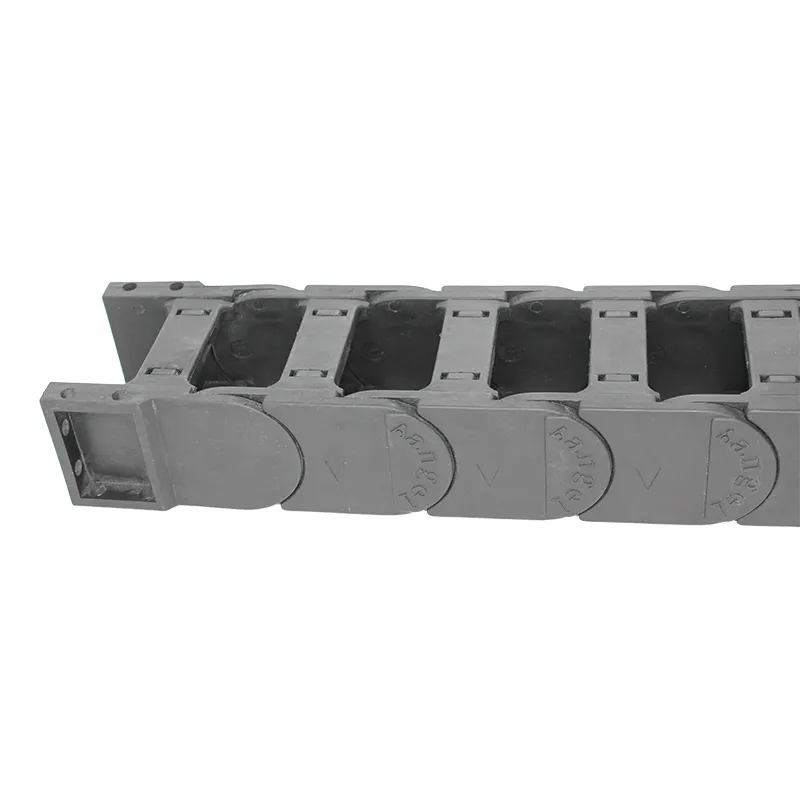Exploring the Benefits and Applications of Drag Chain Links in Industrial Settings
Understanding Drag Chain Links Essential Components in Cable Management
In the realm of industrial automation and machinery, the organization and protection of cables are paramount. One of the most effective solutions for managing cables in motion is the drag chain, also known as energy chain or cable carrier. A crucial element of these systems is the drag chain link, which plays a significant role in ensuring the efficiency, longevity, and safety of the entire operation.
What is a Drag Chain?
A drag chain is a retractable system designed to guide and protect moving cables, hoses, and other energy transfer mediums in machinery. When machinery operates, the cables often must move with the components. Traditional methods of cable management can lead to fraying, tangling, and damage. Drag chains offer a solution by providing a structured pathway that reduces wear and tear on these vital connections.
The Role of Drag Chain Links
Drag chain links are the individual segments that connect to form the whole drag chain. Each link is designed to house cables securely while allowing them to move freely as required by the mechanical operation. These links can be made from various materials such as plastic, metal, or composite, depending on the application and environmental conditions.
1. Material and Design
The material used for drag chain links is crucial for the performance of the drag chain
. Plastic links are lightweight and resistant to corrosion, which makes them ideal for many applications. Metal links are more robust and can withstand higher temperatures and loads, making them suitable for heavy-duty environments. Moreover, design attributes such as flexibility, size, and connection methods can vary, leading to tailored solutions for specific needs.2. Customization
One of the notable advantages of drag chain links is their customizable nature. Designers can choose from a variety of link sizes and configurations, allowing businesses to create a system that fits their particular machinery setup. The ability to add or remove links provides flexibility, accommodating changes in cable length or machinery design.
drag chain link

Benefits of Using Drag Chain Links
Utilizing drag chains and their corresponding links comes with numerous benefits.
1. Increased Durability By encasing cables in a protective link structure, drag chains significantly increase the lifespan of the cables within, reducing maintenance costs and downtime.
2. Enhanced Organization Drag chains help to prevent tangling and clutter. This organization is not only better for machine operation but also for safety, reducing the risk of accidents caused by loose cables.
3. Versatility Drag chains can be used in a wide variety of applications, from industrial machines to robotics, CNC machines, and automated conveyor systems. Their adaptability makes them a go-to solution for many engineers.
4. Improved Aesthetics In addition to functional benefits, drag chains can provide a cleaner, more organized appearance to machinery. This can improve the overall look of an industrial operation and enhance company branding.
Applications in Various Industries
Drag chain links are utilized across numerous sectors, including manufacturing, aerospace, automotive, and telecommunications. In manufacturing, for instance, they are integral to CNC machines, allowing for smooth and reliable operation. In the aerospace industry, where space is limited and weight is a concern, drag chains help manage cables efficiently without adding unnecessary bulk.
Conclusion
Drag chain links are essential components in the effective management of cables and hoses across various applications. Their durable designs, customizable features, and significant benefits make them a preferred choice for many industries. As machinery continues to advance and automation becomes more widespread, the importance of having efficient cable management systems, highlighted by drag chain links, will only continue to grow. Investing in quality drag chain systems can enhance productivity, reliability, and safety, ultimately contributing to the success of operations in today’s competitive landscape.








